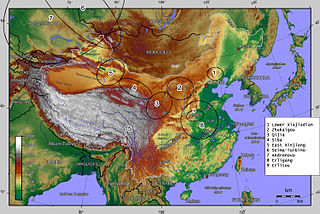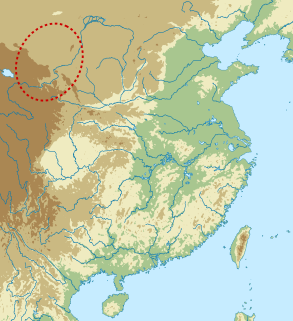 W
WSets and individual examples of ritual bronzes survive from when they were made mainly during the Chinese Bronze Age. Ritual bronzes create quite an impression both due to their sophistication of design and manufacturing process, but also because of their remarkable durability. From around 1650 BCE, these elaborately decorated vessels were deposited as grave goods in the tombs of royalty and the nobility, and were evidently produced in very large numbers, with documented excavations finding over 200 pieces in a single royal tomb. They were produced for an individual or social group to use in making ritual offerings of food and drink to his or their ancestors and other deities or spirits. Such ceremonies generally took place in family temples or ceremonial halls over tombs. These ceremonies can be seen as ritual banquets in which both living and dead members of a family were to supposed participate. Details of these ritual ceremonies are preserved through early literary records. On the death of the owner of a ritual bronze, it would often be placed in his tomb, so that he could continue to pay his respects in the afterlife; other examples were cast specifically as grave goods. Indeed, many surviving examples have been excavated from graves.
 W
WThe Dayangzhou Chengjia site is an archaeological site located on the Gan River in Dayangzhou Town, Xingan County, Jiangxi, China. The site was excavated in 1989, and it dates to around 1200 BCE. The rich offerings of bronze and jade objects made it the second richest burial site known after the Fu Hao's tomb.
 W
WThe Erligang culture is a Bronze Age urban civilization and archaeological culture in China that existed from approximately 1510 to 1460 BC. The primary site, Zhengzhou Shang City, was discovered at Erligang, within the modern city of Zhengzhou, Henan, in 1951.
 W
WThe Erlitou culture was an early Bronze Age urban society and archaeological culture that existed in the Yellow River valley from approximately 1900 to 1500 BC. A 2007 study of radiocarbon dating proposed a narrower date range of 1750 to 1530 BC. The culture was named after the site discovered at Erlitou in Yanshi, Henan. The culture was widely spread throughout Henan and Shanxi and later appeared in Shaanxi and Hubei. Chinese archaeologists generally identify the Erlitou culture as the site of the Xia dynasty, but there is no firm evidence, such as writing, to substantiate such a linkage.
 W
WJinsha is an archaeological site in Chengdu, capital of China's Sichuan Province. The site is located in Qingyang District, along the Modi River (摸底河). It is named for a nearby street, itself named after the Jinsha River.
 W
WThe Lower Xiajiadian culture is an archaeological culture in Northeast China, found mainly in southeastern Inner Mongolia, northern Hebei and western Liaoning, China. Subsistence was based on millet farming supplemented with animal husbandry and hunting. Archaeological sites have yielded the remains of pigs, dogs, sheep and cattle. The culture built permanent settlements and achieved relatively high population densities. The population levels reached by the Lower Xiajiadian culture in the Chifeng region would not be matched until the Liao Dynasty. The culture was preceded by the Hongshan culture, through the transitional Xiaoheyan culture. The type site is represented by the lower layer at Xiajiadian, Chifeng, Inner Mongolia.
 W
WThe Majiayao culture was a group of neolithic communities who lived primarily in the upper Yellow River region in eastern Gansu, eastern Qinghai and northern Sichuan, China. The culture existed from 3300 to 2000 BC. The Majiayao culture represents the first time that the upper Yellow River region was widely occupied by agricultural communities and it is famous for its painted pottery, which is regarded as a peak of pottery manufacturing at that time.
 W
WThe Qäwrighul culture is a late Bronze Age culture which flourished along the Kongque River in Xinjiang from ca. 2100 BC to 1500 BC.
 W
WThe Qijia culture was an early Bronze Age culture distributed around the upper Yellow River region of Gansu and eastern Qinghai, China. It is regarded as one of the earliest bronze cultures in China.
 W
WSanxingdui is the name of an archaeological site and a major Bronze Age culture in modern Guanghan, Sichuan, China. Largely discovered in 1986, following a preliminary finding in 1929, archaeologists excavated remarkable artifacts that radiocarbon dating placed in the 12th–11th centuries BCE. The type site for the Sanxingdui culture that produced these artifacts, archeologists have identified the locale with the ancient kingdom of Shu. The artifacts are displayed in the Sanxingdui Museum located near the city of Guanghan.
 W
WThe Siba culture, also called Huoshaogou culture (火烧沟), was a Bronze Age archaeological culture that flourished circa 1900 to 1500 BC in the Hexi Corridor, in Gansu Province of Northwest China. It was discovered in 1984 at Sibatan in Shandan County. Siba type pottery vessels are different from the others in Gansu. Siba produced painted pottery with coloured decorations; these were painted after the vessels had been fired. Similar pottery was used by the Tianshanbeilu culture at Hami basin to the west.
 W
WThe Siwa culture was a Bronze Age culture in southeast Gansu Province, China. It was discovered by Swedish geologist Johan Gunnar Andersson in 1924 at Mount Siwa (寺洼山) in Lintao County, hence its name. It flourished circa 14th to 11th century BC, it is tentatively attributed to the cultures of the Di (狄) and Qiang (羌) peoples.
 W
WTanheli is an archaeological site in Ningxiang, Hunan, one of major national historical and cultural sites in Hunan.
 W
WThe Wucheng culture (吳城文化) was a Bronze Age archaeological culture in Jiangxi, China. The initial site, spread out over 4 km2 (1.5 sq mi), was discovered at Wucheng Township, Jiangxi. Located on the Gan River, the site was first excavated in 1973. The Wucheng culture probably developed in response to cultural contacts with the expanding Erligang culture, melding Erligang influences with local traditions. The Wucheng culture was a distinct contemporary of Sanxingdui and Yinxu (Anyang).
 W
WThe Xiaohe Cemetery, literally "Little River Cemetery" and also known as Ördek’s Necropolis, is a Bronze Age site located near Lop Nur, in Xinjiang, Western China. It contains about 330 tombs, about 160 of which were looted by grave robbers before archaeological research could be carried out.
 W
WXindian culture was a Bronze Age culture in the Gansu and Qinghai provinces of China. Xindian culture is dated ca. 1500–1000 BCE, a radiocarbon testing of an artefact produced a date around 1000 BCE, which roughly corresponds to the Western Zhou period of the Central Plain area.
 W
WXinzhai is an early Bronze Age archaeological site that was found 1979 in Henan, China. It is located about 20 kilometres (12 mi) southeast of Xinmi, Zhengzhou.
 W
WThe Yueshi culture was an archaeological culture in the Shandong region of eastern China, dated from 1900 to 1500 BC. It spanned the period from the Late Neolithic to the early Bronze Age. In the Shandong area, it followed the Longshan culture period, and was later replaced by the Erligang culture.
 W
WThe Zhukaigou culture was a late Neolithic and early Bronze Age culture centered in the Ordos Plateau of Inner Mongolia, China. The type site at Zhukaigou was discovered in Ejin Horo Banner, Inner Mongolia, and excavated from 1977 to 1984. Zhukaigou culture is a reputed progenitor of the Ordos bronze culture and accordingly a first "Northern Zone" culture, extending to northern and central Inner Mongolia, northern Shaanxi, and northern Shanxi, with the Ordos region at its center. Transition to metalworking is dated to around the end of the third millennium BCE, at the same time was attained a higher level in the ceramic. Zhukaigou culture lasted to c. 1500 BCE.